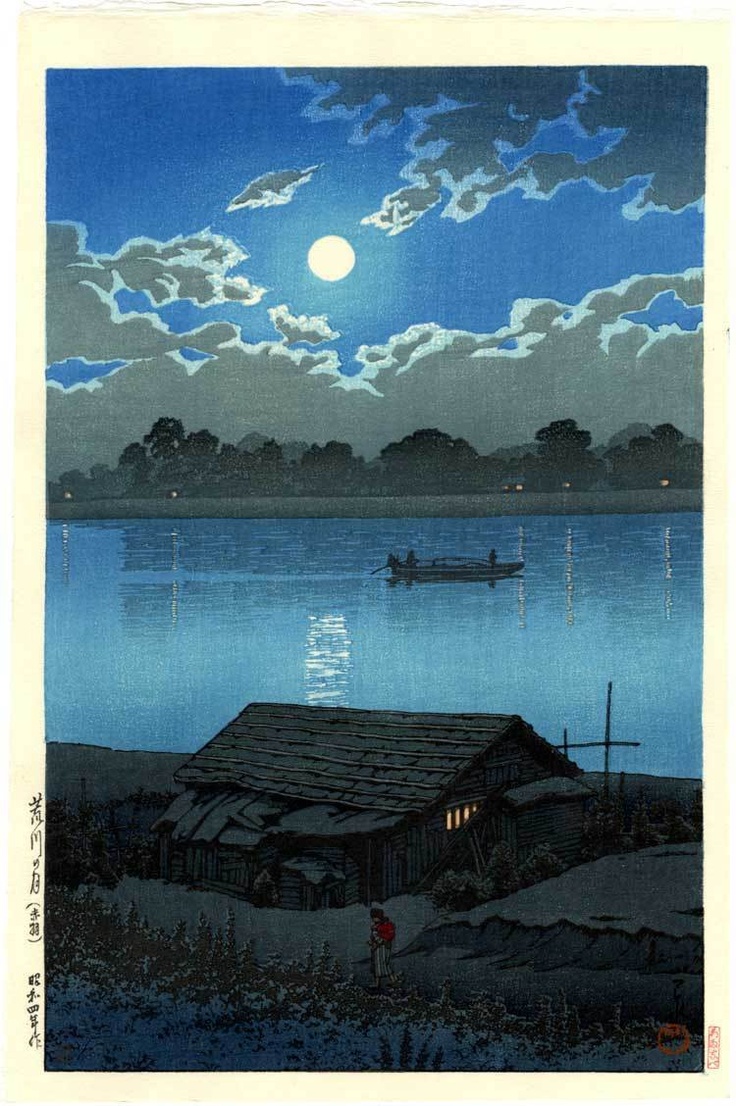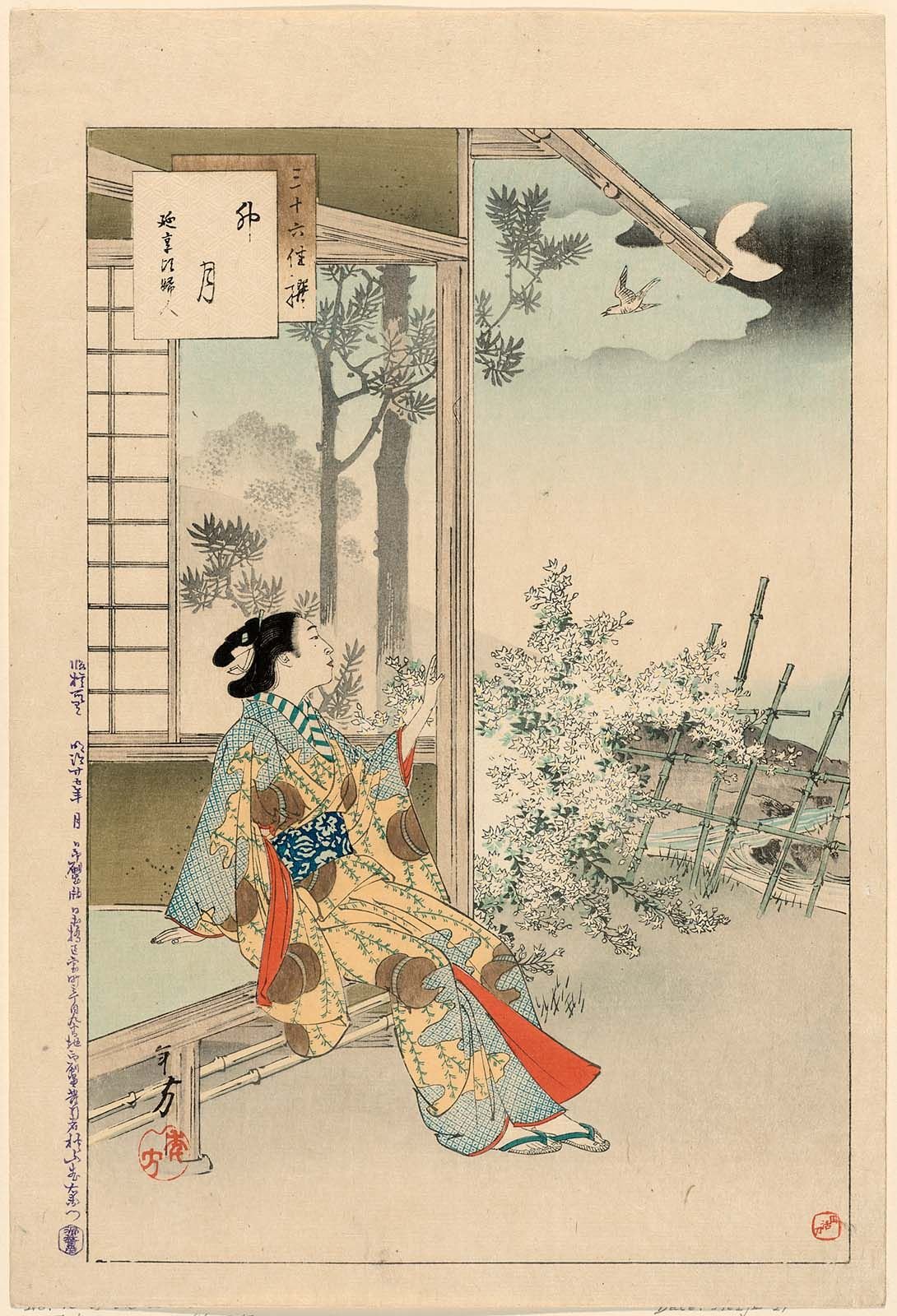During the Edo era[1], there was a certain class of women who weren’t thought of very highly. Even today, they’re often looked down on — proof that some things never change. Chiyo-ni, however, saw things differently. She wrote:
身あがりに独ねざめの夜寒哉
miagari ni hitori nezame no yosamu kana[2]
on her day off
the prostitute wakes up alone
ah! the cold of night
—Chiyo-ni[3]

Chiyo-ni is often considered the greatest female haiku poet of Japan, or at least the most admired. Her teachers were disciples of Bashō, and his influence echoes in her verse. Yet she developed her own quiet voice, refined and intimate. She began composing haiku at age 7, and by 17, her work was known across the country.
Some time after her husband died, she took Buddhist vows and became a nun; she still lived at home, but lived a very simple life, writing poetry and communicating with friends.
In the above haiku, she takes a compassionate look at sadness of a profession we don’t often give much compassion to: a prostitute waking alone on her day off, feeling the bite of the night’s cold.
One of her friends, a fellow nun named Kasenjo, had been a prostitute in her youth; it’s speculated Chiyo-ni may have been thinking of her when she wrote the above poem.
Whatever the inspiration, it’s a remarkable moment of empathy.
-
1603–1868, the period when the Tokugawa shogunate ruled Japan. ↩


